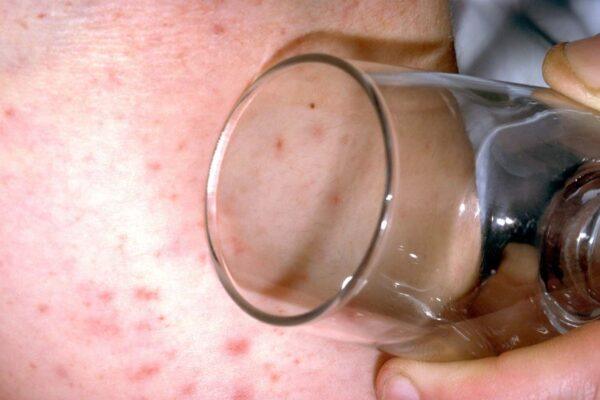Meningitis is an infection of the protective membranes that surround the brain and spinal cord (meninges). It can affect anyone, but is most common in babies, young children, teenagers and young adults.
Symptoms of meningitis, septicaemia and meningococcal disease include:
- headache
- a stiff neck
- a dislike of bright lights
- a high temperature
- cold hands and feet
- vomiting
- confusion
- breathing quickly
- muscle and joint pain
- pale, mottled or blotchy skin
- spots or a rash
- being very sleepy or difficult to wake
- fits (seizures)
There are two types of meningitis:
- Bacterial: a serious infection that requires urgent treatment with antibiotics. Can result in long term complications.
- Viral: generally a less-serious infection which doesn’t often result in long term complications. Does not need treatment with antibiotics.
Unfortunately, without tests, it can be extremely difficult to distinguish the two.
However, following the introduction over the past few years of routine vaccinations for babies against infections such a meningococcus, pneumococcus and haemophilus, the rates of bacterial meningitis in children have more than halved. As a result, the number of children affected each year by bacterial meningitis in the UK is now less than 1 in 10,000.
What can you do to help your child?
Only a tiny proportion of children who have a fever and are miserable have bacterial meningitis. Look closely at the symptoms in the red and amber box above.
● Children should be assessed by a medical professional if you are worried.
● If your child seems unsettled or uncomfortable, you may wish to give your child paracetamol or ibuprofen.
● It can take 30 minutes for your child’s temperature to start to fall and for your child to start to feel better after taking paracetamol or ibuprofen.
● If you have given your child one of these medicines and they are still uncomfortable 2 hours later you could try the other medicine.
Paracetamol
● There are different types of paracetamol for children of different ages including 2 different strengths of syrup – infant and Six plus. Always read the dose instructions carefully. You must wait at least 4 hours between doses. Do not give more than 4 doses in 24 hours.
Ibuprofen
● Ibuprofen is available in syrup and tablet form. Ibuprofen is not suitable for some children. If you are unsure whether your child can take ibuprofen, check with your pharmacist or doctor. Always read the dose instructions carefully. Don’t give ibuprofen if your child has not had a wee in the last 12 hours. You must wait at least 6 hours between doses. Do not give more than 3 doses in 24 hours.
● It can be normal for the temperature to go back up when the medicine wears off.
● Avoid tepid sponging your child. It doesn’t actually reduce your child’s temperature and may cause your child to shiver.
● Encourage them to drink plenty of fluids.
● However, remember that fever is a normal response that may help the body to fight infection and paracetamol/ibuprofen will not get rid of it entirely.
● Avoid tepid sponging your child. It doesn’t actually reduce your child’s temperature and may cause your child to shiver.
● Encourage them to drink plenty of fluids.
● If a rash appears, do the glass test.


